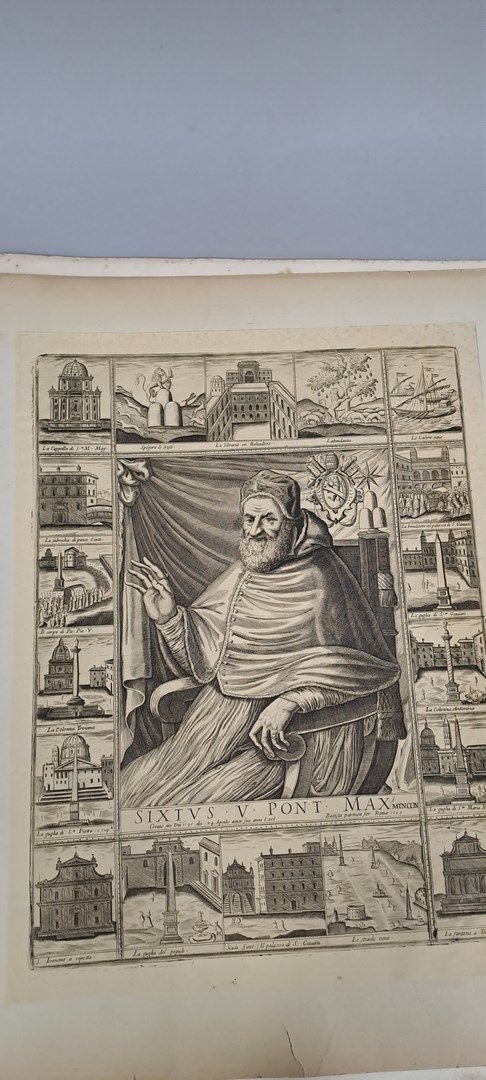Description
PORTRAITS OF POPES Sixtus IV by J.Hopfer (a little late, cut to the subject, glued), Sixtus V Pont. Max (Battista parmen for Romae 1589), Gregorius XIII Papa Bononiensis, Marcus Antonin ( N.Van Aelst sold cut and pasted) ... Clementis XIV Pontificis Maximi d'ap. J.Porta by J.Volpato. Etching, burin, beautiful proofs slightly yellowed, some folds, Attached: 5 religious subjects . 9,5 x 6,4cm. 48 x 36,2cm. Together 9 plates.
18
PORTRAITS OF POPES Sixtus IV by J.Hopfer (a little late, cut to the subject, glued), Sixtus V Pont. Max (Battista parmen for Romae 1589), Gregorius XIII Papa Bononiensis, Marcus Antonin ( N.Van Aelst sold cut and pasted) ... Clementis XIV Pontificis Maximi d'ap. J.Porta by J.Volpato. Etching, burin, beautiful proofs slightly yellowed, some folds, Attached: 5 religious subjects . 9,5 x 6,4cm. 48 x 36,2cm. Together 9 plates.
You may also like
